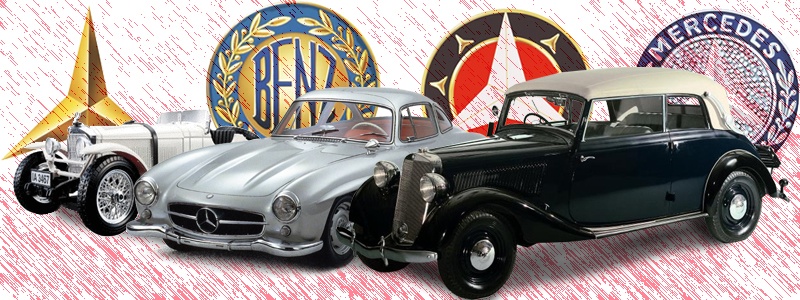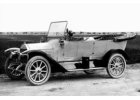 |
|
1907 - 1914
A century ago, the owner of a Mercedes usually delegated cranking, praying and probably cursing as well to his unfortunate chauffeur. You would certainly need to be in good form to swing four cylinders totalling over 7¼ liters. More >> |
 |
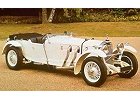 |
|
1928
Designed by Ferdinand Porsche, the Mercedes SSK is regarded
by most as the finest pre-war sports built. More >> |
 |
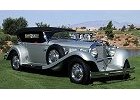 |
|
1934 - 1939
Definitely one of the most desirable masterpieces in the
pre-war period, this car foresaw the trend of Mercedes-Benz
in having incomparable build quality and elegance of design. More >> |
 |
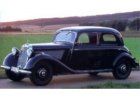 |
|
1936 - 1953
In April 1945 Daimler Benz executives announced that
the company had "ceased to exist", however
some of the less damaged manufacturing plants fell into
the Allied occupied zone and, after as many ex-employees
could be located, production resumed on the 170. More >> |
 |
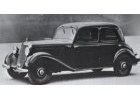 |
|
1949 - 1955
For a diesel powered Mercedes to be successful, the engineers
needed to create a car that would perform as well if not
better than its petrol cousin. And, as always, the Mercedes
engineers succeeded. More >> |
 |
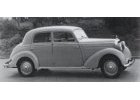 |
|
1949 - 1955
While the design of the 170S was not actually new, in
fact its routes stretched back as far as 1936, it did
play an important role in re-establishing Mercedes in
post-war Europe. More >> |
 |
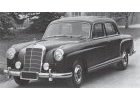 |
|
1951 - 1956
Introduced after a showing at the Frankfurt Auto Show
of 1951, production began in July of 1951. Closely resembling
the Mercedes 170S, the headlights were instead moved to
the front fenders and the model featured much more elegant
interior appointments. More >> |
 |
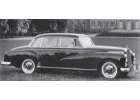 |
|
1951 - 1956
First introduced to the public at the 1951 Frankfurt Motor
Show, the 300 is important in the post war Mercedes line-up
as it represents the return by Mercedes to manufacturing
outstanding high quality and luxurious automobiles. More >> |
 |
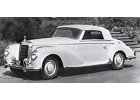 |
|
1951 - 1958
Simply put, these were not just good automobiles, they were great. The 170 may have helped re-establish Mercedes as a manufacturer, but it was the 300S that re-established it as the world's best automotive marque. More >> |
 |
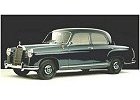 |
|
1953 - 1962
When the 180 was introduced in 1953, its main feature
was the new chassis design - one that used sectional steel
side members tied into the floorpan - resulting in improved
rigidity and noise reduction. More >> |
 |
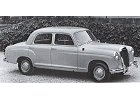 |
|
1953 - 1962
The 180D used a four door unitary bodyshell which formed
the basis for many other Mercedes saloon models. As with
all Mercedes cars the 180 was well built and offered excellent
reliability. More >> |
 |
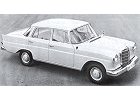 |
|
1956 - 1965
The new look 190 was vastly more modern in appearance,
the Mercedes designers incorporated fins for the first
time, of course fins being almost mandatory on cars built
in the early 1960's. More >> |
 |
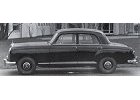 |
|
1956 - 1959
The 219 represented an evolution rather than an evolution,
and as is still the case with cars of today such an evolution
involved increasing the length of the wheelbase and the
power output of the motor. More >> |
 |
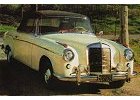 |
|
1956 - 1959
The 220S sedan was the third of the new generation models
shown to the public at the Frankfurt Show in 1956. It
was also the most powerful one of the trio and the most
expensive one as well. More >> |
 |
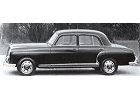 |
|
1958 - 1960
While production of the 220SE began in April of 1958, the model would not come to market until September, and even then the Mercedes regular production lines would not get underway until October. More >> |
 |
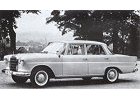 |
|
1958 - 1965
While it was usual for the Mercedes diesel model to follow the release of the petrol driven variety, it would take an astonishing 2 years for the 190D to debut. More >> |
 |
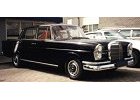 |
|
1958 - 1968
Today there are still many "Finnies" on the
road, such was the high build quality of these cars,
and because the fins that were to date the design of
the car so quickly are now seen as an excercise in design
and beauty the 220 and 220S are appreciating in value. More >> |
 |
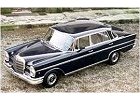 |
|
1959 - 1965
As with the model it was replacing (the 219), the new
220 was available with the "Hydrak" transmission
until 1961. In fact for almost a year, between 1961 and
1962, the 220 was available in manual form only until
Mercedes introduced a new "Auto" transmission
as an option. More >> |
 |
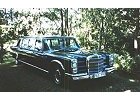 |
|
1963 - 1981
In 1961 Mercedes built the 600 to be the world's ultimate
saloon car, a luxurious Rolls Royce type car that had
no regard to cost or compromise. It offered affluent
members of society a 320 cm wheelbase and 5.5 metre four
door saloon. More >> |
 |
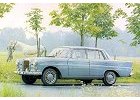 |
|
1965 - 1968
Production of the "Fintail" 200 lasted until 1968 and,
during the first year of its life, was the smallest
of the seventeen models of passenger cars manufactured
by Mercedes. More >> |
 |
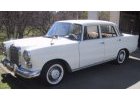 |
|
1965 - 1968
It was during the production run of the 200D that the
500,000 Mercedes Diesel was manufactured - attesting to
the popularity of Diesel even back in the 1950's and 1960's. More >> |
 |
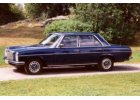 |
|
1968 - 1974
The new model 250 broke fresh ground for Mercedes in having a new independent rear suspension using semi-trailing links instead of their famous low-pivot swing-axle. More >> |
 |
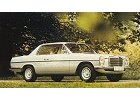 |
|
1968 - 1974
Mercedes coupes have always been eye-catchers, the two
door design and resultant window shape making for sleek
sophistication. More >> |
 |
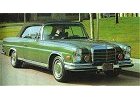 |
 |
1969 - 1971
The 280SE 3.5 luxury coupe and convertible were introduced
at the Frankfurt Auto Show in 1969. The basic body style
actually dated back to the 1961 220SE model, and it was
only slightly altered. More >> |
